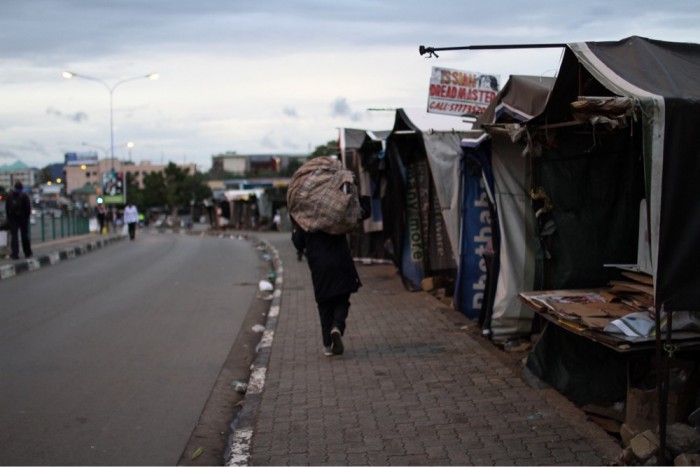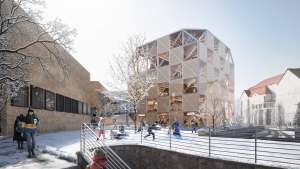
The urban fabric of the city of Maseru in Lesotho is a continuation of concepts that were conceived during and because of colonialism. This is, however, beginning to change. Despite its small size, measuring 138 square kilometers, Maseru is a diverse place that offers unique experiences that are both removed from and intertwined with other cultures from around the world.
With over 80 000 Internet users and even more television and radio users in the region, the connections to the world beyond have greatly influenced how people in the city identify themselves today. There are transformative and destructive ways in which the identity of citizens can shape a city. The latter is evident in the imitations in design, which impact the future culture and development of a city. The former is about how city planners decide to integrate and respond to local culture.
The identity of any city is embodied in the nuanced identities of its people. It is these layers that can inform the design of cities. In addition to the identity of the citizens, cities are shaped by their historical, climatic and sociopolitical conditions. All of these can be used as reference in designing infrastructure that best suits a city, from the design, material and functionality.
Seana Marena and Architecture:
The Basotho Blankets (Seana Marena) are a good example of how a foreign concept was adapted by Basotho and used to not only unify the identity of the nation to the world but to also form a base to immortalise its history and culture at the same time. Despite being introduced by foreigners, the blankets illustrate the country’s historical development and lifestyle as well as traditions with its pattern and continued use.
For instance, symmetrical patterns resembling Litema which are mural designs practiced by Basotho women to decorate exterior walls of their rondavels and Poone, a graphic representation of Basotho’s staple food, maize. Additionally, some design blankets tell the story of Lesotho’s relation to World War 2, showing reference to war airplanes together with Lesotho’s coat of arms. Modern fashion designs have adopted the blanket as well, changing and reconstructing its form into young and fashionable cuts. It’s trendy, yes, but it is not far removed from its grounding motif of Seana Marena.
The above paragraph can be used to make the same argument about architecture. It is time for designers and city planners in Maseru to move beyond conventional imitations of modern architecture into designs that depart from the diverse culture of Lesotho.
Though the culture of the people in Maseru is always transforming, it can be can be fragmented into micro identity’s that will create and occupy space. Architects need to think of the micro scale before the macro.
The people as fabric of the city:
Street vendors and small businesses occupy every inch of the city in Maseru yet its building typology fails to engage their presence. They follow and lead the traffic, occupying nooks and crannies in between spaces the developers neglected. They are under the footbridge on Moshoeshoe Road, on the edge of the curb, on intersections and pedestrian crossings and along the major and minor roads. This creates a multi-layered environment that also accommodates the pedestrian in transit, musician, hawker and even the driver stuck in the traffic. These varying usages of the city overlap in a disorderly sequence that somehow seems to work. It works purely because of necessity and not because big developments are making room for marginalised business ventures. These developments still prioritise the movement of vehicles and an architecture whose function was outpaced fifty years ago.
The taxi rank or “Ka Stopong”, as the locals call it, is the perfect model of how space persists in its most organic form. Ka Stopong winds itself in and around some of the oldest and newest buildings, creating an unbroken tapestry of identity and resistance. Every single day, a variety of people move through it, in an unregulated mingling of different identities.
On one hand, the fact that Ka Stopong remains untouched is a good thing but on another, this shows the inefficiencies of city design in the city. A city cannot fully develop if certain spaces are ignored. Ka Stopong is important in thinking about spaces that are ignored in the city but it is also important in thinking about how it is far easier to ignore it than to take into account its many identities. In such a space, design can merely act as an auxiliary in a space that already has its own identity.
Architects need to design in response to and in favour of the everyday occupant. This could breed hybrid spaces that allow for individual ideas and identities to carve their place in Maseru and formulate new and unique experiences.
Redesigning Maseru:
The Basotho blankets have become an important adhesive for Lesotho in this globalised era. In the same way, architecture and urban design in Maseru could do the same. Instead of being an imitation or forced cultural spectacle it can derive its uniqueness from evaluating and understanding the needs of its citizens. This can be done by realising that the scale that may be most suitable for parts of the city like Ka Stopong is not necessarily high-rise and robust but perhaps more permeable and sustainable.
The city must explore new sustainable ways of using the mud bricks and stone that many locals undermine to build affordable and sustainable houses. Utilising traditional principles and building materials does not degrade the city. It can reimagine weaving and mud as building technologies to fulfill the city’s desire for modernism and sustainability. This could very well highlight its uniqueness by optimising local resources and technologies that can easily be transferred to locals, giving them a sense of ownership of the buildings in the city.
Constructing buildings with thatched roofs and carving Litema patterns on exterior facades is by no means a full proof plan but to re-imagine the design of Maseru, designers cannot continue do so without taking a serious heed to its varying identities, both the traditional and modern.
This story was first published on INNERCITY, a platform about African cities. The story was written by Mpho Sephelane, an architecture student at the University of Cape Town.






